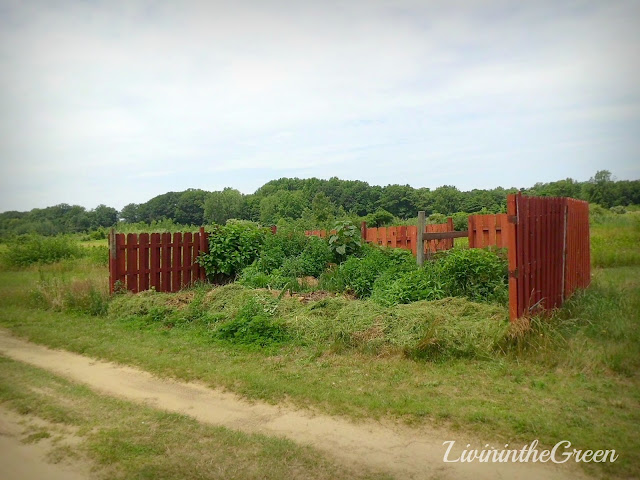Summer seems to be the season for cuts and scrapes as the weather causes us all to spend more time outdoors. Between gardening, swimming, and all kinds of sports and camping - these small injuries are bound to occur.
That's where this herbal remedy comes in for these minor problems. This plant is abundant, free and effective...my favorite combination for herbal cures. You don't have to order it or do any special prep (in the summer) as it's most likely underfoot in most grassy locations.
What it is you ask? It's the humble plant, "Plantain" or officially known as "Plantago Major" or "Plantago Lanceolata." I'll be focusing on the first variety as it's very easily found in rural, suburban and even urban neighborhoods.
 |
| The flower of Plantain. Its flowers and seeds feed butterflies and even birds. |
My first introduction to this amazing plant was from my mom. Years ago she told me how when she was just a girl, had gotten a huge gash in her big toe from a hatchet that had fallen on it. Now, this was in the depression and years before antibiotics were discovered. My grandmother found some plantain leaves, made a poultice from them and applied them to the carefully washed gash. It took a few applications of this plant but the fairly deep wound healed beautifully and with only a minor scar.
My mom wasn't into plants or herbs at all but she remembered the story and the plant and showed me what it looked like. I was so intrigued by her memory and tucked it away into my memory until I had a chance to use it myself.
 |
| Plantain thrives in dry poor soils. |
That chance came some time later when I was changing out a storm window for the screen and the window fell heavily against my finger and gave it a nasty cut. It was summer and my mom's story came back into my head, so I quickly located some leaves of the plant and made a poultice (where you mash the clean leaves of the plant by crushing and bruising them) and placed it on the gash with a bandage to keep it in place. I did this a few times over the next few days and my cut not only healed beautifully, but with no scar as well.
I was impressed. Since then I have used it several times for cuts, bruises and scrapes. I clean the area and place a poultice of mashed leaves on the area and then bandage to keep the leaves in place. I've even just wrapped leaves around the wound area and secured with masking tape if I couldn't find a band-aid...worked like a charm.
 |
| It loves the edges of roadsides and its leaves are resilient to foot traffic. |
Europeans understood its value enough to bring it to the New World when they settled here."Plantain was brought to the US and also to New Zealand by European settlers who valued it for it's culinary and medicinal properties. The settlers seemed to leave the plant wherever they went, thus earning it the name "White Man's Foot' or "Englishman's Foot" by the natives of both countries." 1
Some interesting facts about this plant are as follows...
"Plantain is very high in beta carotene (A) and calcium. It also provides ascorbic acid (C), and vitamin K. Among the more notable chemicals found in plantain are allantion, apigenin, aucubin, baicalein, linoleic acid, oleanolic acid, sorbitol, and tannin. Together these constituents are thought to give plantain mild anti-inflammatory, antimicrobial, antihemorrhagic, and expectorant actions. Acubin has been reported in the Journal Of Toxicology as a powerful anti-toxin. Allantoin has been proved to promote wound healing, speed up cell regeneration, and have skin-softening effects."1
It also is very edible and reputed to be good for the lungs as this modern study indicates..."Medicinally, plantain is astringent, demulcent, emollient, cooling, vulnerary, expectorant, antimicrobial, antiviral, antitoxin, and diuretic. Plantain is approved by the German Commission E (a sort of German "FDA" that studies and regulates herbs and herbal uses) for internal use to ease coughs and mucous membrane irritation associated with upper respiratory tract infections as well as topical use for skin inflammations. Two Bulgarian clinical trials have suggested that plantain may be effective in the treatment of chronic bronchitis."1
 |
| The leaves of this plant are highly medicinal. Try to locate leaves away from roadsides and areas where it could be sprayed. |
Plantain can be found along the edges of trails, paths, rocky areas and many times in sidewalks and urban locations. It's often found in lawns as well and the large rosette of leaves are easily located.
I believe people's first hand stories and experiences lead to our discovery of plants as valuable remedies. Sure, you can use antibiotic cream on your cuts, but learning first hand what these plants can do give you valuable personal experience with the plant and what it does. If you're on a hike, camping or out somewhere with no first aid available, having plant knowledge can go a long way.
This is also so valuable to pass along to your kids and other generations so this highly medicinal plant's practical use doesn't get lost. When I was looking up information on Plantain, I found it listed on many sites as a weed and a plant to kill. And true, while it does grow in places I don't always want it too, I never weed this plant without realizing its beneficial qualities.
Hope this helps and you'll be able to discover how helpful plantain is...blessings!
What have you used plantain for?
References:
1. http://www.prairielandherbs.com/plantain.htm
More info can be found here as well:
2.http://botanical.com/botanical/mgmh/p/placom43.html
3. http://www.susunweed.com/herbal_ezine/July05/healingwise.htm
Linked to these amazing blog parties... Frugal Days and Sustainable Ways
Homestead Barn Hop






.jpg)
















